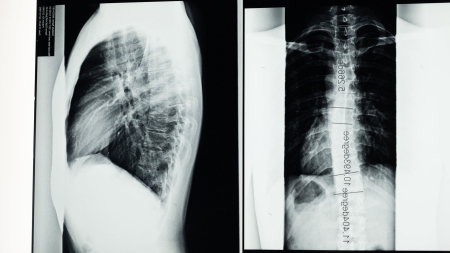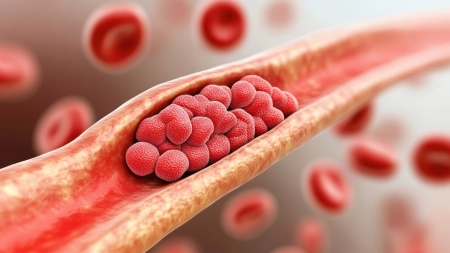What can you do if you have a curvature of the spine?
Scoliosis is a lateral curvature and rotation of the spine over three dimensions. Targeted training can improve poor posture brought about by scoliosis and strengthen the back where it is weaker.

What is scoliosis?
Scoliosis is a condition whereby the spine does not extend vertically from the head to the pelvis, but has an abnormal S- or C-shape curve. What is more, the interconnected chain of vertebral bodies is twisted to varying degrees. The sideways curve plus rotation can lead to one shoulder being higher than the other and/or a misaligned pelvis.
What types of scoliosis are there?
Scoliosis is a permanent curvature of the spine. Some vertebral bodies may alter in such a way that they become flatter on one side than on the other. This position of the bone cannot be altered even with training.
However, it is possible correct poor posture caused by scoliosis using targeted training. Both forms often occur simultaneously: genuine scoliosis plus additional poor posture. Scoliosis usually develops in childhood or adolescence.
What causes it?
The cause is unknown in 90 per cent of cases. In some cases, it may be caused, for example, by muscle or nerve disorders.
What are the symptoms of scoliosis?
Mild scoliosis does not usually give rise to any symptoms (and usually does not require treatment in adults). Also, it does not increase the likelihood of back pain. By contrast, moderate and severe cases can result in muscular tension and pain. Added to this is the often undesirable aesthetic aspect because the misalignment is visible.
What you should bear in mind:
- Pay attention and keep a note of what works for your back.
- The “Rumpfzirkel” (core circuit) app helps to strengthen core muscles (CHF 3, available for iOS and Android, in German and English).
- Allow 15 to 30 minutes per day for exercises that specifically target scoliosis.
- Avoid staying in the same position for long periods of time.
- Try not to carry heavy rucksacks – a wheeled suitcase is a good alternative.
- Carrying a bag over your shoulder will not make scoliosis worse provided you move around enough. Depending on which way your back is curved, you may find it better to carry a bag over one shoulder rather than the other.
- Ideally, you should opt for a job that involves some physical activity and no heavy lifting.
How is scoliosis treated?
Scoliosis that occurs in childhood needs to be monitored closely and, depending on its severity, treated early on. Scoliosis may get worse when a growth spurt occurs during puberty. Scoliosis therapy and wearing a brace temporarily can often prevent the condition from deteriorating and improve the back’s resilience, but it cannot completely “straighten” it.
Both children and adults frequently benefit from scoliosis exercises and a careful training programme to strengthen the spine. However, since every form of scoliosis is different, there are no one-size-fits-all exercises. Specially trained physiotherapists (“scoliosis therapists”) can help patients to determine what are the best physiotherapy exercises for them. It takes time and is not easy to learn how to correct your posture and strengthen the right muscles. Surgery is often the best solution for scoliosis that is getting progressively worse in spite of physiotherapy.
What can those affected do?
It is important to keep active and train your core muscles. All types of sport are possible. In the case of sports that involve running, we recommend that you consult a specialist beforehand if you have moderately severe scoliosis. They can assess if your torso is stable enough to engage in this kind of sport.
Scoliosis tends to make the back stiffer, which is why it can cause pain for adults when practising yoga, for instance. An occasional massage can be beneficial if you suffer from severe tension.
The body becomes so accustomed to scoliosis over time that it does not even register it as a poor posture. For this reason, those affected need to be constantly active and, for example, sit “actively” or lean against the back of a chair while seated instead of sitting slumped in an armchair like a “couch potato”.


